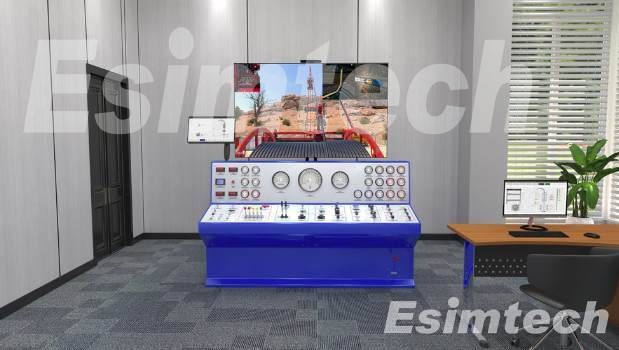Coiled tubing, a flexible pipe wound on a massive reel, has become indispensable for well intervention and production enhancement in the oil and gas industry. However, the complexity of coiled tubing operations demands skilled professionals. To bridge the knowledge-practice gap, the full-size coiled tubing simulator has emerged as a transformative technology. In this article, we explore the significance of the full-size coiled tubing simulator and its impact on the oil and gas sector.
Description of the Full-Size Coiled Tubing Simulator:
The full-size coiled tubing simulator is an advanced training system that replicates real-world coiled tubing activities within a controlled and immersive environment. It combines cutting-edge virtual reality technology, physics-based modeling, and interactive simulations to offer coiled tubing operators an authentic learning experience. The simulator recreates coiled tubing units, downhole instruments, and well conditions, allowing trainees to engage with physical replicas and gain hands-on experience that mirrors actual operations. It accurately replicates equipment functionalities, responses, and limitations, preparing operators for real-world scenarios.

Key Advantages of a Full-Size Coiled Tubing Simulator:
Realistic Training Scenarios:
The simulator provides a lifelike learning experience by faithfully reproducing the physical setup of coiled tubing units and well conditions. Trainees can practice coiled tubing operations in a realistic, controlled setting, enhancing their familiarity with equipment and functions.
Safe Learning Environment:
Coiled tubing operations carry inherent risks, making on-the-job training perilous. The simulator offers a controlled environment for trainees to practice various coiled tubing interventions, including emergency responses, without real-world hazards.
Skill Development and Proficiency:
Operators can develop muscle memory and refine coiled tubing skills through hands-on practice, increasing their competence and efficiency. This prepares them to perform real-world coiled tubing operations with precision.
Cost-Effectiveness:
Traditional coiled tubing training involving field operations can be costly and time-consuming. The simulator eliminates the need for physical setups, reducing costs significantly. Trainees can repeat simulations without extra expenses, expediting learning and minimizing resource utilization.
Versatility and Customization:
Full-size coiled tubing simulators are highly adaptable. They can simulate specific well types, downhole conditions, and intervention scenarios, tailored to individual operational requirements.

Potential for Technological Developments:
Enhanced Realism:
Advancements in virtual reality technology used in oil and gas simulation, could provide even more immersive experiences, closely resembling actual coiled tubing operations.
Haptic Feedback System:
Incorporating haptic feedback devices could provide tactile sensations during virtual operations, increasing realism.
Interactive Downhole Conditions:
Future simulations could include dynamic downhole situations, simulating variations in pressure, temperature, and fluid behavior.
Artificial Intelligence Integration:
AI algorithms could enable dynamic responses based on student activities, offering tailored training experiences.
Performance Analytics:
Detailed data on trainee performance, efficiency, and decision-making could be collected and analyzed, providing feedback for improvement.
Multi-Player Training:
Multi-player scenarios could simulate real-world teaming scenarios, enhancing communication and cooperation among coiled tubing personnel.
Integration with Field Operations:
Integrating the simulator with field operations could enable real-time training based on current well conditions.
Remote Training:
Advancements in connectivity could facilitate remote training, allowing operators from different locations to access the simulator.
Conclusion:
The full-size coiled tubing simulator is revolutionizing coiled tubing training, offering a safe, cost-effective, and realistic learning experience. As technology advances, its potential for further development promises to shape the future of well intervention and production enhancement, ultimately contributing to the oil and gas industry's success.
